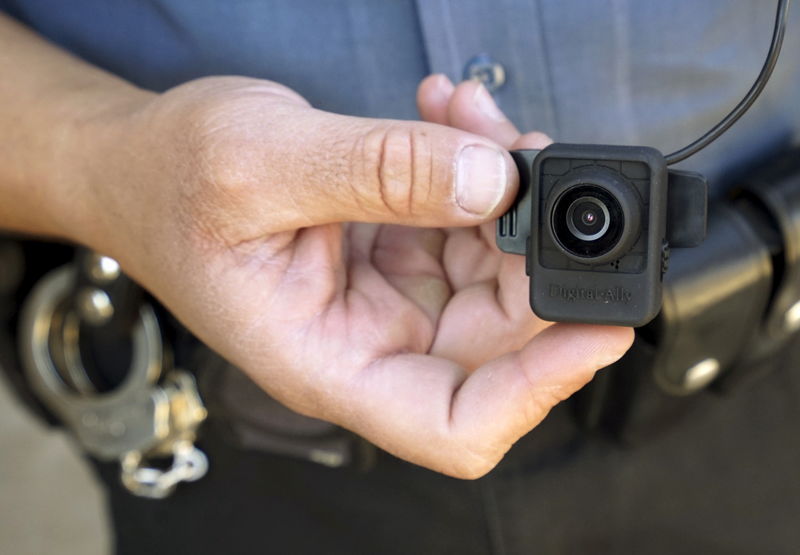By Julia Edwards and Anjali Athavaley
WASHINGTON/NEW YORK (Reuters) - A recent series of widely publicized police shootings of unarmed civilians has heightened interest across the United States in outfitting patrol officers with body cameras. But tight police budgets will limit how widely the devices are adopted, local officials and industry experts told Reuters.
More than a half-dozen companies are competing to supply the nation's nearly 700,000 sworn officers with body cameras, which can cost between $350 and $700 apiece.
(For a graphic on wearable body cameras, go to http://reut.rs/1FFe2LH)
In addition to the cost of cameras, expensive systems are required to process and archive the many hours of video footage produced by the cameras, and the cost of storing archived footage can dwarf the initial equipment costs.
A Reuters survey of the 20 largest U.S. police forces found widespread interest in the devices. But while 16 departments have equipped some officers with cameras or plan to do so, not one has yet been able to provide kits to all its patrol officers, the survey found.
In Boston, for instance, where body cameras are not currently used, police officials are interested but unsure that widespread deployment will be possible. "Cost is always a factor. Whether it is prohibitive or not remains to be seen," said police spokesman James Kenneally.
Suffolk County, New York is the only one of the 20 departments surveyed that is not currently considering cameras. In a statement, the Long Island force said it will monitor the experiences of other departments, including their budget issues, before deciding whether to deploy the technology.
In Baltimore, where six officers have been suspended while authorities investigate the death of a man who suffered a fatal spine injury while in custody, a pilot program is due to launch this week.
But Mayor Stephanie Rawlings-Blake has cautioned against moving too quickly. "We've seen in other jurisdictions around the country where there's been a rush to implementation and it has cost taxpayers millions of dollars," she said Monday on MSNBC's Morning Joe program.
Many police departments are still recovering from budget cuts and don't expect to reach pre-recession funding levels again until 2018, said Hassan Aden, director of research and programs at the International Association of Chiefs of Police.
And so far, there has been little progress on promised help from the federal government. President Barack Obama in December announced a $75-million initiative to fund purchases of 50,000 body cameras, but the funding has stalled due to inaction in Congress.
COSTS AND BENEFITS
One of the few large cities to move beyond the pilot program stage is San Diego. Police Chief Shelley Zimmerman said the city council decided to fund cameras because of past instances of police misconduct. Six hundred of the city's police are using cameras now, and the force hopes to equip all 1,000 patrol officers by the end of the year.
One highly variable cost is storage. Departments set up their own rules about how long footage is stored, usually with input from city officials, community members and police unions. In San Diego, recordings of small interactions, such as traffic warnings, will be stored for as little as six months. Recordings used in investigations or ongoing court cases, will be kept until the case is closed.
The purchase price of San Diego's cameras ranged from $300 to $500, depending on the sophistication of the model. But the total cost of the program in the city's first year was $1 million, largely because of the cost of storage, which will be ongoing. Docking stations for uploading footage to a cloud-based service ran $1495 per unit, according to a copy of the city's contract with its supplier, Taser International Inc. (O:TASR).
Los Angeles, which plans to deploy 860 cameras this summer, will make an initial outlay of $1.5 million for equipment, maintenance and storage, the department told Reuters.
STARTING SMALL
In Phoenix, where police took pay and benefit cuts in a 2014 budget shortfall, outfitting every patrol officer could cost up to $3.5 million, spokesman Sgt. Kevin Johnson told Reuters.
Officers in only one Phoenix precinct now use cameras. "We would like to go citywide, ... but we're going to do it smart and in increments," said Johnson.
Eleven of the 20 largest departments, including New York, Chicago and Washington, D.C., are conducting pilot programs to test equipment and evaluate the worth of employing cameras.
Even programs that start small have been good for body camera suppliers. Taser reported sales of its Axon business, which includes recording devices as well as an accompanying cloud-based storage system, increased 82 percent to $18.9 million in 2014 versus 2013.

Rick Smith, CEO of Taser, said departments may pay more in the long run if they don't purchase the cameras. "The argument we're seeing today is why don't we spend a bit more on cameras now and we'll save a lot on litigation in the future," said Smith.